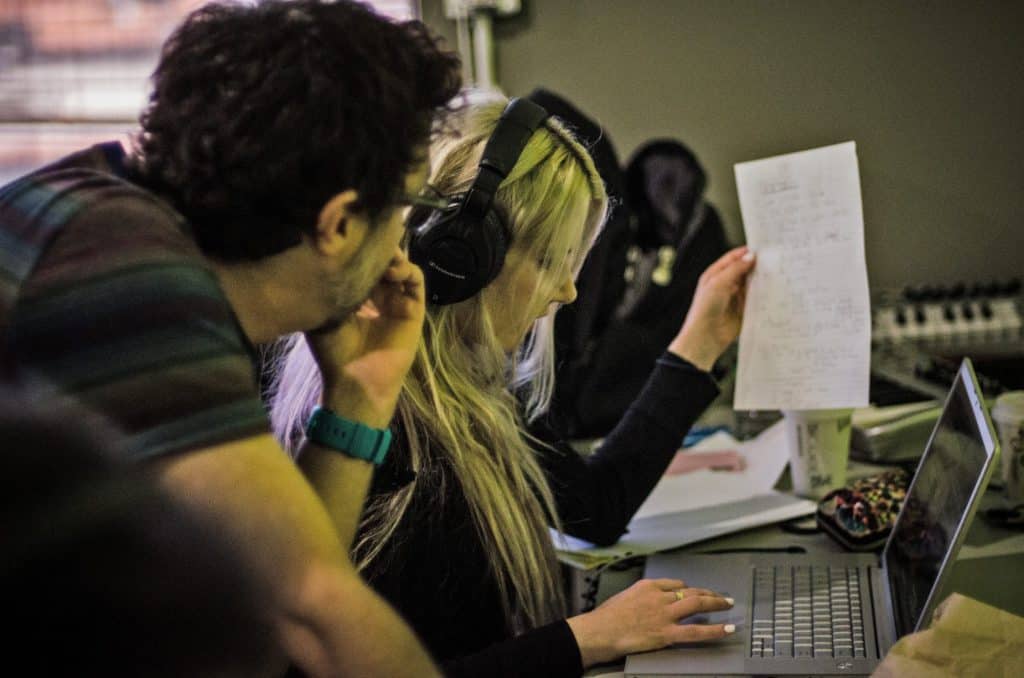Creative Uses for Melodyne
Celemony’s Melodyne is a highly sophisticated pitch analysis and correction software suite known mainly for its use in tuning vocals. As effective as it is in this capacity, Melodyne’s capabilities allow for a range of other creative uses outside of simply correcting mistakes in performance. In this article we will explore some of these and hopefully point the way to other possibilities.
Melodies and Rhythms from Non-Musical Sources
Feeding non-musical audio into Melodyne’s analysis engine can help inspire unique material. Composers have already used Melodyne to analyze the pitch and rhythmic content of speech to create music reflecting the cadences of conversation. Film dialogue, street noise, and casino floors are among the wide range of sources that can be used to generate unpredictable, aleatoric, or naturalistic musical material. Melodyne will try to guess at the nature of the source audio to tune its algorithm, so nonmusical audio may be analyzed as percussion. Set the algorithm to Melodic or Polyphonic mode, depending on the audio you’re analyzing and the effect you’re seeking, or leave it in Percussive mode to extract the rhythms from an audio source to apply to a percussion part.
Generating Novelty in Material
As incredibly powerful as Melodyne is at analyzing pitch, it is and probably can never be completely flawless;; sometimes harmonics are mistaken for fundamentals or vice versa, sometimes noise is mistaken for pitched material. One of my favorite creative uses of Melodyne is to record guitar or a synthesizer sequence, analyze it with Melodyne, and make use of the imperfections in the analysis to generate fresh material. The resulting sudden octave jumps, rhythmic displacements, and ornamental embellishments lend a glitchy, unpredictable feel to synth or instrument parts. More drastic results can be obtained by analyzing material in Polyphonic mode, exporting the result to MIDI, and playing it back in a monophonic synthesizer.
Tuning Nonmusical Pitches to Make Melodies
In the search for new and inventive melodies we might find inspiration in pitched material that wasn’t intended for a musical context. Sounds like birdsong, raindrops, and even sneakers squeaking on the court during a basketball game all produced pitched material outside of the conventional logic of music. Take this kind of sound, analyze it with melodyne in melodic or polyphonic mode and convert to MIDI for playback through a synthesizer. Optionally, you can quantize the pitches to a chosen scale or tempo to suit the rhythmic or tonal context of the music you are making, or tune them to play a melody of your own devising.
Tempo Mapping
Melodyne Editor or Studio versions allow users to tap into an under-appreciated aspect of the software’s feature set: mapping and extracting tempos. Melodyne will attempt tempo detection on any audio it analyzes, and if the tempo of the audio differs from the project tempo in your DAW, Melodyne creates a map that can be applied to the project tempo, so all the slight variations in tempo and timing will be shared by MIDI quantized to that map. In this way you can extract grooves and feel from your favorite existing recordings, match the groove of MIDI tracks to already-recorded audio, or the opposite; quantize your audio to match the project grid. Since automatic music analysis is still far from perfect, Melodyne may misidentify the pulse of the track at times, requiring you to fix it manually. This is easily done with convenient options to change tempo by simple ratio, found in the tempo region drop-down menus, or by manually dragging barlines to the proper place.
Formant Shifting
Formant shifting, as heard on music by the likes of Kendrick Lamar and Zeroh, is one of the more exciting vocal effects to find recent use in pop music. This technique manipulates the “formant” frequencies of the vocal tract that characterize a voice’s timbre, shifting the frequencies up and down. Melodyne can help you achieve this sound by use of the formant editor. Select a note and use the formant tool to pitch the formant frequency up or down by a number of cents. Apply a shift to a whole passage to manipulate its overall tone, or edit individual notes to add variety and movement in your parts. Applying steadily increasing and decreasing values across multiple notes can create a smooth shift between two extremes, adding a subtle motion to a passage’s tone or, with more extreme modulation as on Lamar’s 2017 song “Pride,” continuously moving from male to female and back to reflect a deeper lyrical meaning. Applying formant shifting to instrumental passages might also offer useful results, but applying it in polyphonic mode will lead to objectionable amounts of phase distortion so it’s best to stick with monophonic sources.
Melodyne is a powerful piece of software with sound design and compositional capabilities musicians are only beginning to discover. This article should give you ample territory for exploration, and hopefully helps provide inspiration as you continue to push the boundaries of musical expression!


